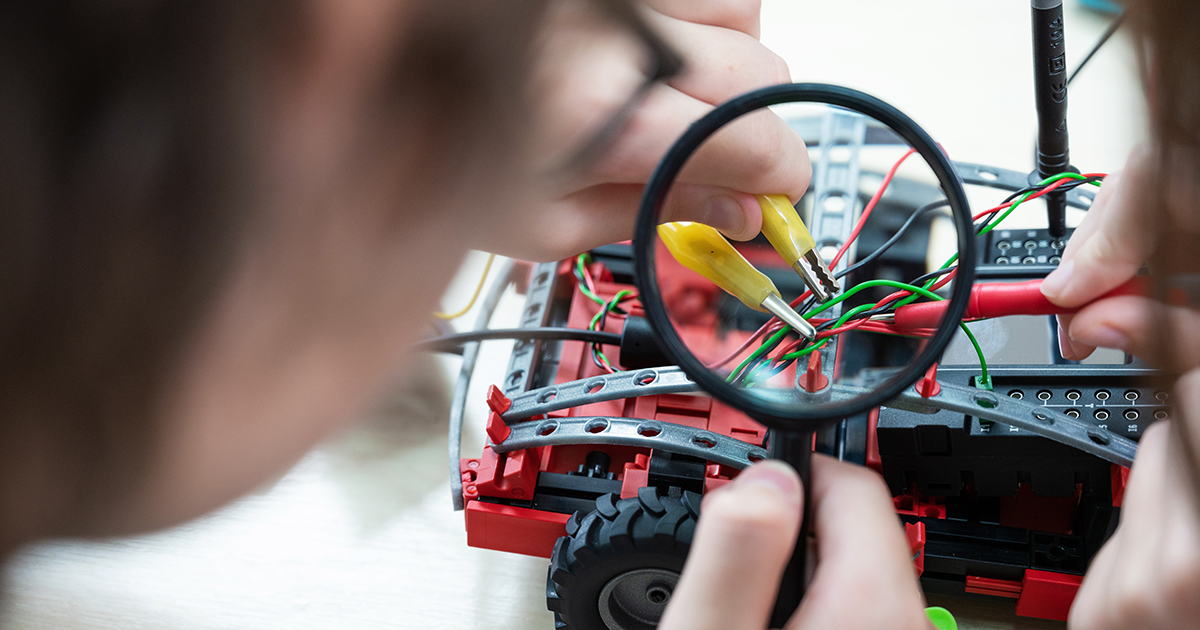P-TECH 9-14 Pathways to Success
Implementation, Impact, and Cost Findings from the New York City P-TECH 9-14 Schools Evaluation

The New York City P-TECH 9-14 schools are an educational model that ties together the secondary, higher education, and workforce systems to improve outcomes across domains. The distinguishing feature of the model is a partnership among a high school, a community college, and one or more employer partners that focuses on preparing students for both college and careers within six years.
P-TECH 9-14 schools collaborate with local colleges to provide students with an opportunity to earn a high school diploma within four years, followed by a cost-free, industry-recognized associate’s degree. During the six-year program, employer partners provide students with work-based learning experiences such as internships, mentoring, and job shadowing. This model has proliferated rapidly both nationally and internationally since the first school was opened in Brooklyn, NY in 2010.
This study provides impact, implementation, and cost study findings from the first rigorous evaluation of the model, examining the first seven P-TECH 9-14 schools that opened in New York City. The study follows entering classes of students for seven years after they begin ninth grade, which would carry them through the end of their expected high school graduations and through three years of postsecondary education. The study takes advantage of the random lottery process created by the New York City high school admissions system to identify the model’s effects: It compares students who won lotteries to attend P-TECH 9-14 schools (the P-TECH 9-14 group) with students who applied but did not win (the comparison group). It also includes an in-depth implementation study that assesses how schools carried out the model, and a cost-effectiveness study that examines costs per college degree earned for P-TECH 9-14 schools compared with other schools.
Findings
- The high school, career, and college elements of the P-TECH 9-14 model were implemented at all schools, though there was also variation across the schools in the opportunities they had available and how they implemented specific elements of the model. Graduating with an associate’s degree from the affiliated college is just one of many potential postsecondary options that school staff members may advise a student to take.
- Students in the P-TECH 9-14 group were 38 percentage points more likely to have had an internship during four years of high school than students in the comparison group.
- After four years of high school, 46 percent of students in the P-TECH 9-14 group had dual enrolled in at least one college-level course, compared with 20 percent of students in the comparison group.
- Seven years after entering high school, students in the P-TECH 9-14 group were 5 percentage points more likely to have completed an associate’s degree. These impacts primarily reflect results among young men: 13 percent of young men in the P-TECH 9-14 group completed an associate’s degree, compared with 3 percent of young men in the comparison group.
- The cost analysis shows that PTECH 9-14 schools can generally be operated with resources that are not significantly different than other high schools in the community. Postsecondary costs were higher for the P-TECH 9-14 group, as would be expected given the model’s focus on earning a college degree. The findings about the model’s cost-effectiveness in producing postsecondary degrees at six years are inconclusive. Additional cost analyses over longer periods are needed.







